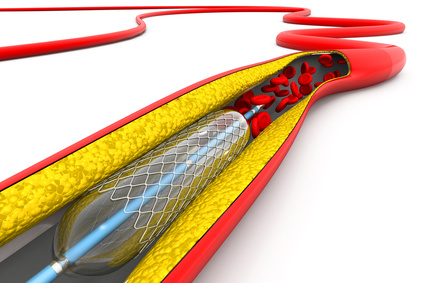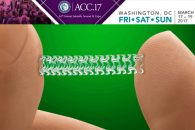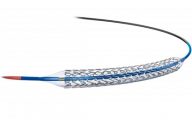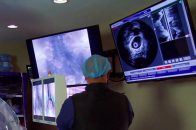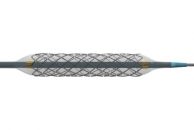Despite the fact that some randomized studies and meta-analyzis have suggested prolonged dual antiaggregation could be associated to increased death rate, the underlying mechanism remains unclear. It is only logical to assume that if there was an actual increase in mortality associated to prolonged antiaggregation, this should be due to bleeding; however, no studies have…
Peripheral artery disease associated to ischemic and bleeding events after DES implantation
Patients with peripheral artery disease (PAD) have higher rates of cardiovascular events after DES implantation, which could be explained partly by higher platelet reactivity. The present work studies the relationship between platelet reactivity and clinical events after PCI in patients with and without a history of peripheral artery disease. The ADAPT-DES study (Assessment of…
ABSORB III: More Events with Absorb Than With Xience at Two Years
The two year outcomes of ABSORB III, presented at the scientific sessions of the American College of Cardiology 2017, have shown the bioresorbable scaffold Absorb GT1 (BVS, Abbott Vascular) was associated with increased risk of target vessel failure, compared against the everolimus eluting stent Xience. At 25 months, target vessel failure occurred in 11%…
SYNERGY vs. XIENCE in Complex Real-World Patients
Courtesy of Dr. Guillermo Migliaro. Technological advancements in drug-eluting stents (DES) have shown significant improvement as regards the safety and efficacy of these devices. DES are considered to be the golden standard for the treatment of percutaneous coronary interventions. DES with permanent or durable polymers (DP) have been associated with local inflammatory reactions and…
Biolimus and Everolimus Eluting Stents in Coronary Artery Disease: Similar Safety?
Courtesy of Dr. Guillermo Migliaro. Events such as very late stent thrombosis and restenosis after first generation DES stenting were associated to the inflammatory response of site implantation. The presence of a durable or permanent polymer was thought to play a central role in said inflammatory process, which caused, among other things, delayed re-endothelialization and…
Why We Should Use IVUS in Complex Coronary Lesions
Courtesy of Dr. Carlos Fava. Drug eluting stents (DES) have shown benefits in terms of restenosis vs. conventional bare metal stents (BMS). Many of the advantages of DES depend on correct implantation, especially in complex lesions. In complex lesions, the use of intravascular ultrasound (IVUS) provides important information on lesion length, vessel diameter, calcification…
Zotarolimus with Durable Polymer vs. Biolimus with Biodegradable Polymer
The present work compared the safety and efficacy of the permanent polymer zotarolimus eluting stent vs. the biodegradable polymer biolimus eluting stent in unselected coronary artery disease patients. The biodegradable polymer biolimus eluting stent resulted superior to the first generation durable polymer stent in long term randomized studies. However, little evidence supports this superiority…
RESOLUTE Global: 5 Years of Zotarolimus DES Stenting
This study assessed the cumulative incidence of cardiovascular evens after zotarolimus eluting stent implantation. Individual studies often lack enough statistical power to show differences in low frequency adverse events. The Resolute zotarolimus eluting stent was evaluated across 10 prospective clinical trials designed with identical adverse events definitions. The Global Resolute clinical trial program…
New Generation of DES already being tested, so far safe
This study evaluated the safety and efficacy of the new drug eluting stents (Medtronic, Santa Rosa, California) to treat de novo coronary lesions. These new polymer free drug filled stents have the potential to improve clinical outcomes and allow a shorter dual antiplatelet therapy. In addition, they have been made with three layers of continuous…
The ReACT Study: Is Angiographic Follow-Up Necessary?
The purpose of this study was to assess the long-term clinical impact of routine angiographic follow-up after coronary angioplasty. Routine angiographic follow-up has been criticized by both clinical and interventional cardiologists for increasing the rate of coronary revascularization due to the “oculostenotic reflex.” This caused a shift in the paradigm for clinical studies, and…
